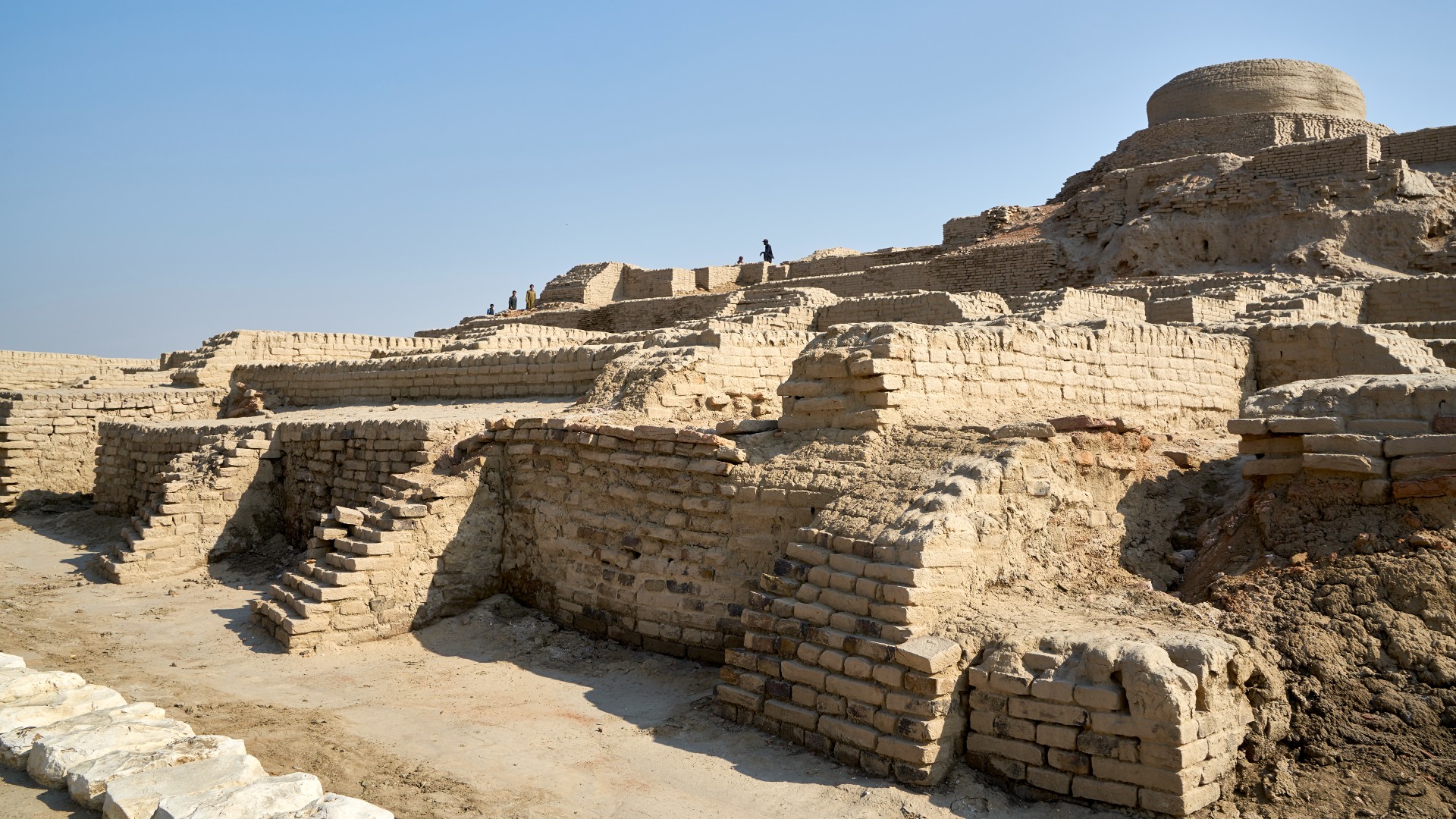
1.4 Indus civilization
Indus civilization is one of the four earliest civilisations of the world along with the civilisations of Mesopotamia (Tigris and Euphrates), Egypt (Nile) and China (Hwang Ho).
The civilization forms part of the proto-history of India and belongs to the Bronze age.
In its mature form, the civilization lasted between 2500-1750 BC.
It can be divided into following sub-parts
Early Phase 3500-2600 BC
Middle (mature) Phase 2600-1900 BC
Later Phase 1900-1400 BC
Dayaram Sahni first discovered Harappa in 1921.
RD Banerjee discovered Mohenjodaro or Mound of the Dead in 1922.
Nomenclature of Indus Valley Civilisation
Indus Valley Civilisation coined by John Marshall as it flourished along the Indus river.
Harappan Civilisation after the first discovered site, Harappa
Saraswati – Sindhu Civilisation as most of the sites have been found along the Indus-Saraswati River.
Geographic Spread
The civilization covered parts of Sindh, Balochistan, Afghanistan, Punjab, Gujarat, Uttar Pradesh, Haryana, Rajasthan, Jammu and Kashmir, Punjab and Maharashtra.
Mundigak and Shortughal are the two sites located in Afghanistan
Western most site Sutkagendor on Makran coast. Easternmost site Alamgirpur in Uttar Pradesh.
Northern most site Manda in Jammu (River Chenab). Southernmost site Daimabad in Maharashtra (River Pravara) is a major site.
Religious Practices
Chief Female Deity: A terracotta figure where a plant is how growing out of the embryo of a woman, represents Mother Goddess (goddess of Earth)
Chief Male Deity-PashupatiMahadev (Proto-Shiva), represented in seals as sitting in a yogic posture on a low throne having three heads and two horns. He is surrounded by an elephant, a tiger, a rhino and a buffalo and two deer appear at his feet.
Lingam and Yoni worship was prevalent. Trees (pipal) and animals (bull, birds, dove, pigeon) were also worshipped. No temples have been found, though idolatry was practised.
SCRIPT
It was pictographic in nature. Fish symbol is most represented.
It was written from right to left in the first line and then left to right in the second line. This style is called Boustrophedon.
Decline of the Civilization
The Harappan culture flourished till about 1900 BC, then it began to decline. There is no unanimity among
historians, regarding the exact reason for the decline of this urban civilization. There are many theories that
show the decline of the Indus culture.
Different Reasons for Decline of Indus Civilization
1.External Aggression :
Wheeler, Piggot and Gordon Childe
2.Inundation:
MR Sahani
3.Epidemic:
KVR Kennedy
4.Tectonic disturbance (e.g. Dholavira):
Marshall and Raikes
5.Climate Change:
Aurei Stein and ANGhosh
6.Flood (e.g. Mohenjodaro) :
Marshall, SR Rao, Maickey
https://www.youtube.com/watch?v=KhDY4KJuvc0
